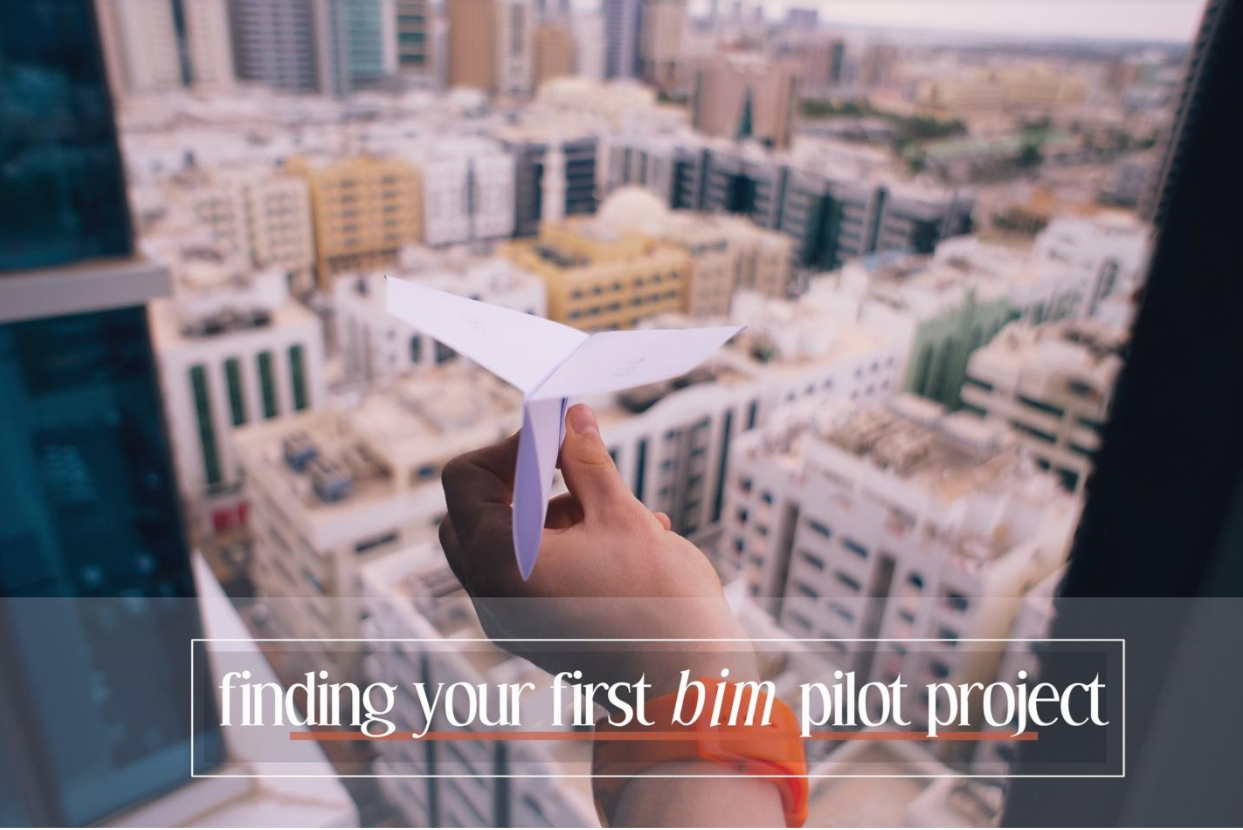Technical Area | Articles
The place to solve all your BIM doubts
Finding your first BIM pilot project
BIM Implementation Planning & Budgeting Strategies Infrastructures Project
Introduction
A pilot project is one of the most essential tools in long-term successful BIM implementation in an organization. It is the only practical way to learn to function using BIM and quantify it’s benefits at the same time. And as I have pointed out in my previous articles, BIM is not just software implementation, but a complete revolution in the way an organization functions, it is important that the change to BIM is slow, but thorough. Therefore pilot projects that allow you to learn small bits of BIM at a time are the most practical and economical way to make the transition to BIM.
Many organizations make the mistake of waiting until a BIM project comes their way. Such a judgment though rational, because it saves resources and reduces implementation costs, is at its core a folly. Because as I have stated earlier, BIM demands a revolution in the entire structure of an organization, and as such a brief period of low productivity is inevitable. Therefore, waiting for a BIM project to come your way puts undue pressure on your team, which is virgin with BIM, and is also unfair to the project owner and other third party workforce members, because a virgin BIM project is bound to lag behind, not only in time, but also in quality.
Therefore, a better way to initiate BIM is to divide the process into small bits. The benefits of which you can measure as and when you receive them. And a good pilot project is one which is free from problems which allows your team to make mistakes and learn from them, and accepts the fact that your team initially will take longer than usual to produce results.
Defining the objectives of a pilot project.
When starting out, it is extremely important to clearly define the scope and purpose of your pilot project, and even more important than that is to take it step by step, one bite at a time. The reason for the first is to guide the latter, or vice versa. In other words, your first pilot project’s scope must be limited to the extant your team can handle. And laying down objectives will inform everybody about their roles, help you estimate the needed resources, and lay a framework to measure the value or savings you are making through BIM vis-à-vis 2D.
Some initial objectives of your pilot project could be:
- Rethinking internal processes, and developing a manual.
- Documenting BIM guides for excavator drivers, foremen, surveyors, etc.
- Forming object libraries, templates, guidelines, etc.
- Testing new software and employee capability.
- Finding if BIM is really valuable by measuring the additional effort against potential savings.
Once you have laid your objectives. You could take the BIM process further by making efforts to achieve those objectives in a pilot project.
Finding the right pilot project.
A pilot project also known as feasibility project or experimental project can be a small part of a project or a project on which your team has a lot of experience and confidence. The following are some points that you could consider before choosing your pilot project.
- Choose the kind of project you do frequently, so that you can quickly switch back to 2-D in case you run into trouble. Further, it is also easy to measure your savings on a project you have prior experience on.
- For obvious reasons, it’s always easier to change your way of working, in this case switching to BIM, on a small project than on a big one. You could also consider piloting a small part of a big project in case all your projects are big.
- A project which has repetitive elements in it is ideal to learn new software because it is less demanding in nature. Therefore, try and find a project which has a lot of repetitive elements in it.
- It is a good idea to work with collaborators like MEP (mechanical, electrical and plumbing) engineers who are already skilled in BIM, so that you can learn from them and at the same time finish the project on time with their help.
Planning a successful pilot project.
When you feel that you have found the correct pilot project to experiment BIM on. You could use the following pre-planning measures to increase your chances of success.
- Take out time to pre-plan your BIM transition by familiarizing your team with an interim BIM manual.
- Have your object library, templates, annotation, colour, text, etc. at your disposal before starting out the BIM process.
- Give extra time to each planning phase to identify mistakes on your existing BIM manual, and rewrite it to make it more accurate.
- It is always beneficial to have a BIM expert in your team, who will pull the entire team together and push it forward with his/her leadership skills.
- Give more resources to the project team to support them in project documentation, and find them additional support from 3rd parties to advise them and help them with modelling if they are seriously lacking behind.
Lastly, you should remember to not demand more than what your team can handle in your initial BIM projects. BIM process is complex and initial development is naturally slow. So as a rule of thumb, your initial BIM demands could be restricted to producing 3D visualizations in BIM software, sourcing quality plans through them and using them in combination while executing on site. At the same time, you could begin to explore BIM’s advanced features to make your model 4D, 5D and so on.
If you like what you read, I would request you to give back to all infrastructure industry people:
- Share this article on social media
- Leave a comment below, and tell me what you think about this.
- Join the Infra Pioneer Group Group so we can together take this further.
Source: https://www.infrapioneer.com/finding-your-first-bim-pilot-project/











